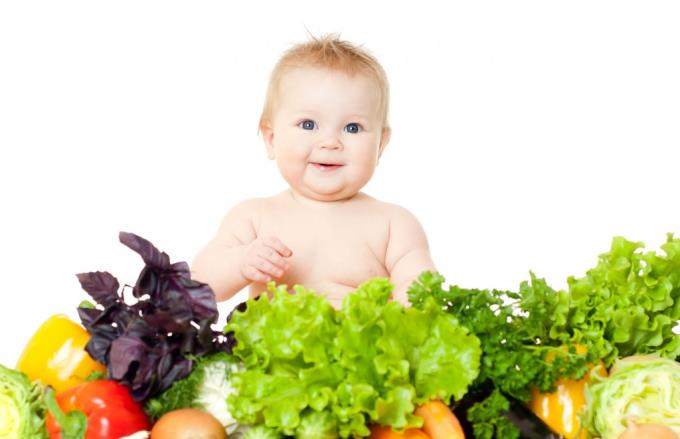Rich in fiber, vitamins and minerals, vegetables and fruits are indispensable in children's nutritional menu. However, most babies are lazy to eat. How mom?
In the menu of nutrition for children , mothers must definitely not ignore vegetables with high fiber, vitamins and minerals. However, most babies never voluntarily eat vegetables. Did mom do something wrong?

Depending on the age, children like to eat different vegetables
Do you know that depending on the age, the child's taste will be especially sensitive to a certain vegetable. Only when choosing the right kind can your baby be more interested in vegetables. Refer to the list of vegetables according to the child's age:
4-6 months of age: Beans, sweet potatoes.
6-8 months: Carrot, pumpkin, turnip, zucchini, peas.
8-10 months: Broccoli, cucumber, eggplant, potato.
10-12 months: Spinach, tomatoes, other vegetables.
To add vegetables to the child's nutritional menu, mothers should choose according to the baby's age and preferences to process refined or raw. Change it regularly and refresh the food so your child doesn't get bored. There are also some tips below to make your baby like to eat vegetables more, mom try it.
1 / Combine vegetables with your baby's favorite food
Trying adding veggies to your baby's favorite foods can help improve the situation. Your baby likes to eat cakes, porridge, noodles? Creative with unlimited food, putting vegetables in a "disguised" way, maybe children will like it even more.
2 / Give your baby a variety of vegetables
Practice for children to eat vegetables, mothers need to be patient From the first time, if the baby spit out, does not cooperate with eating vegetables, the mother should not give up or force or scold the baby. Try it next time, with another vegetable. Mother's soil soaked in rain. Mom continues to add vegetables and baby's daily diet. Children will gradually like to eat vegetables over time, sooner or later.
3 / Join children in preparing food
Children are very curious, always want to discover new things. So, do not hesitate to take your child to the supermarket, or let him get acquainted with vegetables in the kitchen. For older children, mothers can ask them to help cook with chores like picking or washing vegetables. Children will be very excited when they can make their own food.
4 / Parents are examples
Children love to imitate adults. Even at a very young age, watching other people eat and drink, most babies have cravings. Therefore, parents should show their children that they really enjoy eating vegetables. Surely, the baby also wants to follow.

Teaching good children through a good example of parents Children from a young age live in the loving arms of their parents. They always watch their parents through each day they grow up. The actions of parents and children still learn unconsciously without distinguishing between right and wrong. Therefore, if parents act, bad behavior will affect their personality when ...
5 / Time to eat disciplined but not forced
Mom should practice disciplined eating habits for the baby. The discipline here is eating out, playing out, not eating while watching TV, running or screaming. At the same time, that does not mean that parents have the right to scold and stress when the baby refuses to eat vegetables. Creating a happy, interesting, and tear-free mealtime can make your baby more interested in eating.
6 / Snacks with vegetables
When children finish playing and playing, they are often very tired and hungry. At this time, the mother can "take advantage" of giving her baby dishes with vegetables, without appointment of meat and vegetable candies, cookies with vegetable salad, delicious vegetable soup ...
7 / Get creative with your baby's food
Vegetables are colorful, mothers can take advantage of this to unleash creativity when decorating food for children. Changing the form of food will stimulate the child's taste and interest in eating. Scold me!
8 / Rule of one piece
For children who do not like to eat vegetables, mothers should definitely adopt the one-piece rule. That is, children must eat at least one piece of vegetables in their daily diet. From one slice, increase to 2 pieces, then 3 pieces. Gradually, the child will get used to the indispensable vegetable meal.













